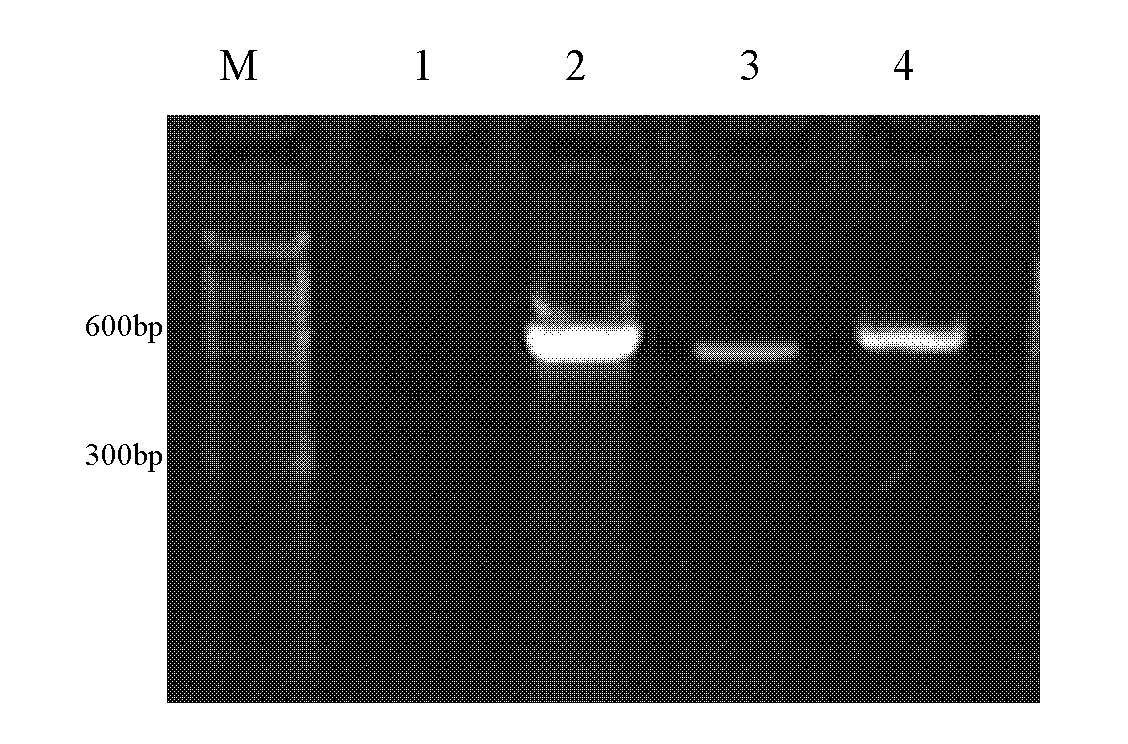Fungus colony polymerase chain reaction (PCR) method and pathogenic fungus identification method
A pathogenic and fungal technology, applied in the direction of biochemical equipment and methods, microbial measurement/inspection, etc., can solve the problems of unseen research reports on filamentous fungi, difficult cells, etc.
- Summary
- Abstract
- Description
- Claims
- Application Information
AI Technical Summary
Problems solved by technology
Method used
Image
Examples
Embodiment 1
[0027] 1. Colony culture:
[0028] Inoculate the filamentous fungi used in the experiment on the prepared PDA medium under aseptic conditions, and culture them at 28°C for 7-14 days. In bacterial normal saline, shake and vortex to disperse the mycelium mass as much as possible, take a small amount of prepared bacterial solution and inoculate it on the PDA plate medium, and incubate at 28°C for about 20-40h (depending on the growth of the colony). Colonies that were visible to the naked eye were considered experimental colonies.
[0029] 2. DNA template preparation method for colony PCR
[0030] Take a 0.2ml sterile PCR tube, add a small amount of high-pressure sterilized quartz sand, add 20μl sterile 1×TE buffer, and set aside. Scrape a small amount of the above-mentioned mycelium with a needle, add it to the prepared PCR tube, mark it, cover it tightly, boil it at 100°C for 5 minutes, then immediately put it in a -20°C refrigerator for 5 minutes, repeat twice, and put it in...
Embodiment 2
[0057] 1. Colony culture:
[0058] The fungus adopts the standard bacterial strain Aspergillus fumigatus, and the cultivation method is the same as that in Example 1.
[0059] 2. DNA template preparation method for colony PCR
[0060] With embodiment 1.
[0061] 3.PCR amplification
[0062] Multiplex PCR system primers used fungal universal primer NS, dermatophyte-specific primers and yeast-specific primers (see Table 2). PCR reaction system 25 μl, containing 4 μl 10× buffer, 1.5 μl MgCl 2 (10mmol / L), 2μl dNTPmix (10umol / L), 0.5μl each primer (10μmol / L), 2μl DNA template, 2U Taq DNA polymerase. The reaction conditions were 95°C for 5 minutes after pre-denaturation, 95°C for 1min, 52°C for 1min, 72°C for 1min, a total of 30 cycles, and finally 72°C for 10min. The amplified product was electrophoresed on 1.5% agarose gel, and 4 μl was applied to each sample well, the electrophoresis buffer was 1×TAE, the constant voltage was 80 V, and the electrophoresis was about 30 min. ...
Embodiment 3
[0064] Except that fungus adopts standard bacterial strain Trichophyton rubrum, all the other are with embodiment 2.
PUM
 Login to View More
Login to View More Abstract
Description
Claims
Application Information
 Login to View More
Login to View More - R&D
- Intellectual Property
- Life Sciences
- Materials
- Tech Scout
- Unparalleled Data Quality
- Higher Quality Content
- 60% Fewer Hallucinations
Browse by: Latest US Patents, China's latest patents, Technical Efficacy Thesaurus, Application Domain, Technology Topic, Popular Technical Reports.
© 2025 PatSnap. All rights reserved.Legal|Privacy policy|Modern Slavery Act Transparency Statement|Sitemap|About US| Contact US: help@patsnap.com



